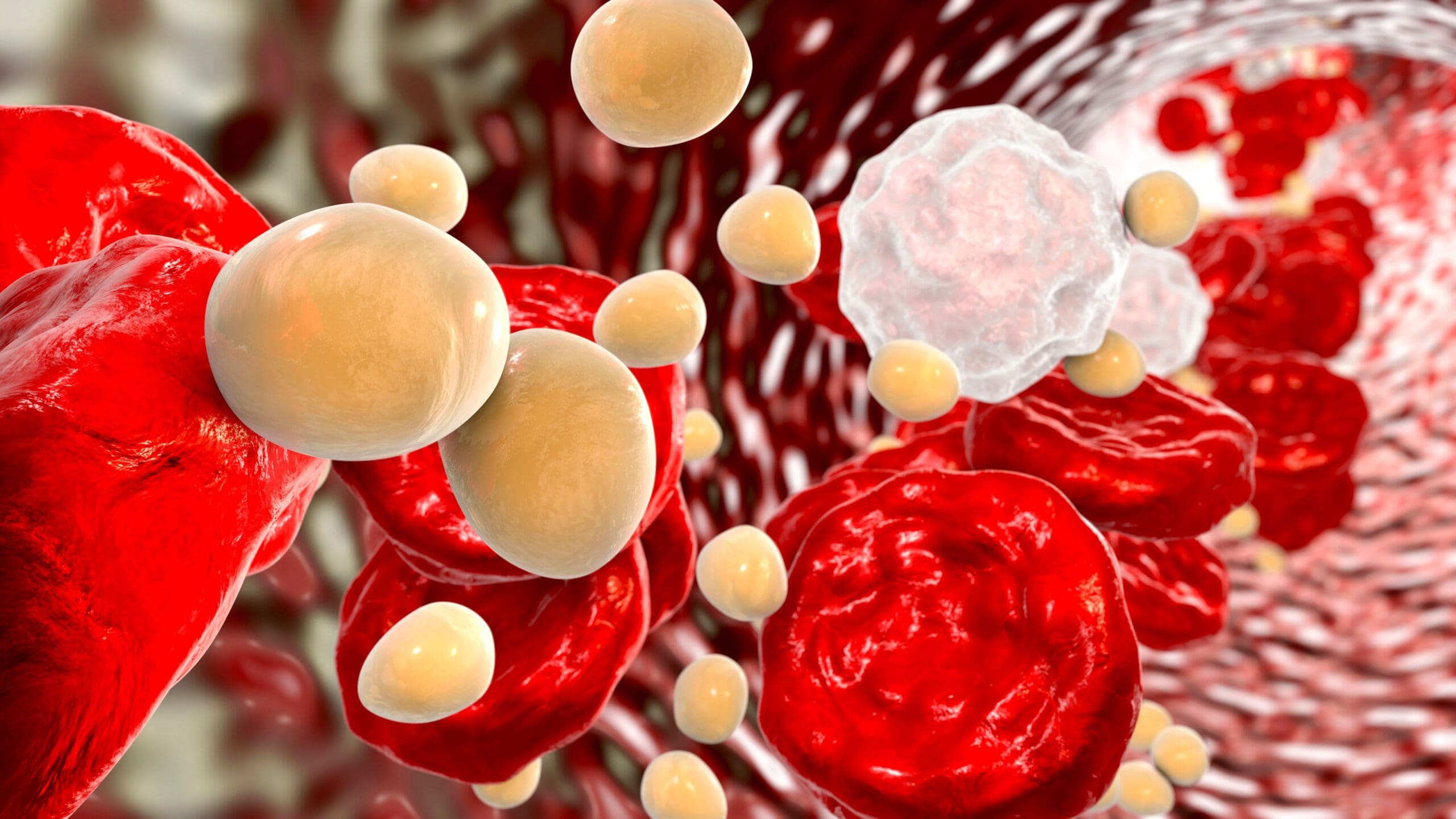Triglycerides are a bigger heart risk than cholesterol
By naturopath Margaret Jasinska
Have you had a blood test recently? Do you know what your triglyceride reading is? You should, because high triglycerides are a risk factor for blood clots, heart attacks and strokes. People with insulin resistance typically have elevated triglycerides. If you have a fatty liver, the first clue is often elevated triglycerides. Fortunately there are safe and effective ways to lower triglycerides.
Triglycerides are a type of blood fat. When you have a blood test, your triglyceride reading will be displayed close to your cholesterol. Cholesterol has a lot of important roles in your body. Cholesterol is a fat like substance called a sterol. It is hard and waxy. Our body manufactures approximately one gram of cholesterol per day; this is mainly in the liver, but also occurs in the intestines, adrenal glands, ovaries and testes. In fact, every cell of our body has the capacity to manufacture cholesterol if needed. We also obtain cholesterol in our diet by eating animal foods such as eggs, meat and dairy products. However, 80% of the cholesterol in our body is manufactured in the liver. Your sex hormones are made out of cholesterol, so you need optimal levels in your body for hormone production, as well as vitamin D production to keep your bones and immune system healthy.
Elevated triglycerides are typically seen in insulin resistance. People with insulin resistance accumulate a lot of deep internal fat called visceral adipose tissue. This is a risk factor for type 2 diabetes, dementia and cancer.
Recent research has found a strong association between high triglycerides and pancreatitis. This research was published in The Journal of the American Medical Association Internal Medicine. Researchers from the University of Copenhagen followed 116,550 men and women for a period of seven years. The risk of acute pancreatitis rose sharply as triglyceride levels rose. The patients’ triglyceride levels were tested in a non-fasting state. At 1.9 to 2.9 mmol/L, the risk of pancreatitis increased by 130 percent; at triglyceride levels above 5, the risk increased by 770 percent. This association remained in place after researchers controlled for age, gender, alcohol intake, smoking and body weight.
Pancreatitis can be fatal. Knowing your triglyceride level can provide an early warning system. Pancreatitis is more common in people who consume large amounts of alcohol, people with gallstones or individuals with a pre-existing digestive disease.
High triglycerides increase the risk of having a stroke.
Stroke is the third largest cause of death in most western nations, after coronary heart disease and cancer. It is a leading cause of serious, long term disability. The most common type of stroke, (80 percent of cases) is ischemic stroke, which is caused by interruption of the blood supply to the brain. The main risk factors for stroke include heredity, smoking, increasing age, high blood pressure, diabetes and heart disease. Elevated blood cholesterol, physical inactivity and obesity are secondary risk factors.
How to reduce blood triglycerides

Cut down on your carbohydrate intake.
Carbohydrate rich foods such as sugar, bread, pasta, rice, potatoes, breakfast cereals and foods made of flour promote high insulin levels. Insulin signals your liver to manufacture more cholesterol and triglycerides. High insulin levels also promote the development of fatty liver and visceral fat. A triglyceride level of 1.5 mmol/L or higher usually indicates some degree of fatty liver. That is still within the reference range. Labs use an upper limit of 1.7 or even 2.
There is a low carbohydrate eating plan in the books Fatty Liver: You Can Reverse It and I Can’t Lose Weight and I Don’t Know Why.

Healthy fats can help lower triglycerides.
Omega 3 fats have numerous heart healthy benefits, including the reduction of triglycerides and an increase in HDL “good” cholesterol. They are found in oily fish (eg. sardines, salmon, mackerel, herrings). It is very important to avoid excess omega 6 fats, as they can promote free radical damage and inflammation in your body, and can cause insulin resistance. Omega 6 fats are found in margarine and most seed oil (corn, sunflower, safflower, soybean and cottonseed). Olive oil is high in beneficial monounsaturated fat and should be included in your diet.

Antioxidants protect the cholesterol and triglycerides in your body from becoming oxidized.
Antioxidants also prevent free radical damage to your artery walls, which can initiate plaque development. Good sources of antioxidants include vegetables, herbs, spices, fruit, dark chocolate, raw nuts and seeds and vitamin C. Raw vegetable juices are an excellent source of antioxidants and should be consumed regularly. See the book Raw Juices Can Save Your Life for recipe ideas.

Poor liver function can cause elevated triglycerides or cholesterol.
Your liver manufactures most of the fats in your body, thus the healthier it is, the better your blood fat levels should be. If you have a fatty liver or raised liver enzymes, your liver will usually make greater amounts of triglycerides and LDL “bad” cholesterol. Your liver is the main fat burning organ in your body, if you have a fatty liver your liver is storing fat, not burning fat. Following the eating guide in the book Fatty Liver: You Can Reverse It can greatly improve the health of your liver.

Stress can cause insulin resistance because it raises inflammation.
It can also lead to comfort eating and drinking excess alcohol. Magnesium reduces the feelings of stress and tension and promotes healthy sleep.
The reason a lot of people don’t eat well is because they are exhausted, feel unwell and don’t sleep well. This can make preparing healthy food feel overwhelmingly difficult. Dr Cabot’s 15 Day Cleanse contains supplements to improve liver, gut and immune health, to promote improved vitality. It also comes with a delicious healthy eating plan that is easy to follow.
If you are concerned about your triglyceride or cholesterol reading and wish to protect your health, see the detailed information in the book Cholesterol: The Real Truth.











Leave A Comment